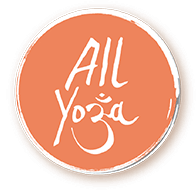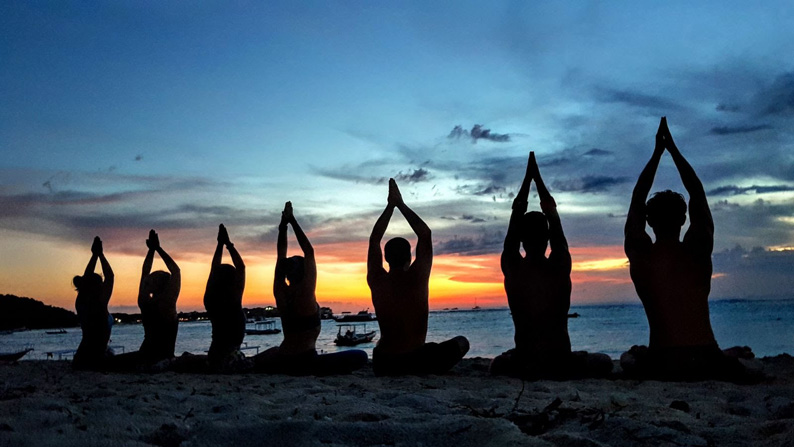Wheels of Fortune: A Beginners’ Guide to the Chakra Theory
Yoga is a personal practice, and we each come to it for different reasons. Some of us naturally gravitate towards the more physical side of the practice (asana) and if we’re not naturally inclined towards spirituality, the mere mention of the chakras could send a person running for the hills! After all, the concept seems pretty abstract, right? The idea of internal and invisible energy sources that govern our bodies, minds, emotions, and the way that we live our lives can feel a little woo-woo to some. However, read on and you may find that the chakras are way more relatable than you ever imagined. Also good to know, if you crave for more in-depth details, All Yoga offers comprehensive teacher training courses in Bali and Thailand where you learn more about the chakra theory- directly from our Indian philosophy teacher.
Let’s begin by acknowledging the culture clash between Western medicine and Eastern philosophy. Western medicine essentially subscribes to a logic of ‘I’ll believe it when I see it’. In order to diagnose a malady or illness, a doctor will run blood tests, look for physical proof, and make a decision based on the scientific evidence. Eastern philosophy couldn’t be more different. In traditional Indian medicine (Ayurveda) there is a profound link between the physical body and the energetic body. An Ayurvedic doctor may hypothesize that our physical sickness is caused by an energetic imbalance. Here we arrive at the first cornerstone of chakra theory: the presence and movement of an energetic life force (prana) within humans, and all living things for that matter. Picture your body as a tree growing out of the ground. A strong and healthy tree will have firm roots, a solid foundation, and grow straight upwards. The stronger the foundation, the more branches a tree will be able to support. When energy can flow freely and without restriction, the entire system of a living being will benefit.
The ancient Indian texts, the Vedas, outline a very similar system to the strong tree trunk – these energy systems within the subtle (energetic) body are referred to as Nadis. The greatest and most important of all of the nadis, SushumnaNadi, is said to originate at the base of the spine and extend upwards through the crown of the head. Sushumna Nadi is like an energetic super-highway that transmits messages all over the body, and throughout the nervous system. There are two additional major nadis that spiral vertically around the Sushumna Nadi, and these are referred to as Idaand Pingala: Ida representing the divine feminine or left brain energy, and Pingala embodying the dynamic masculine or right brain energy. Ida and Pingala weave and spiral around Sushumna Nadi, forming a pattern similar to a DNA double helix. These two nadis intersect at seven major points as they move upwards from the base of the spine to the crown of the head, and these seven points are referred to as the Chakras, understood to be spinning wheels of light within our energetic anatomy.
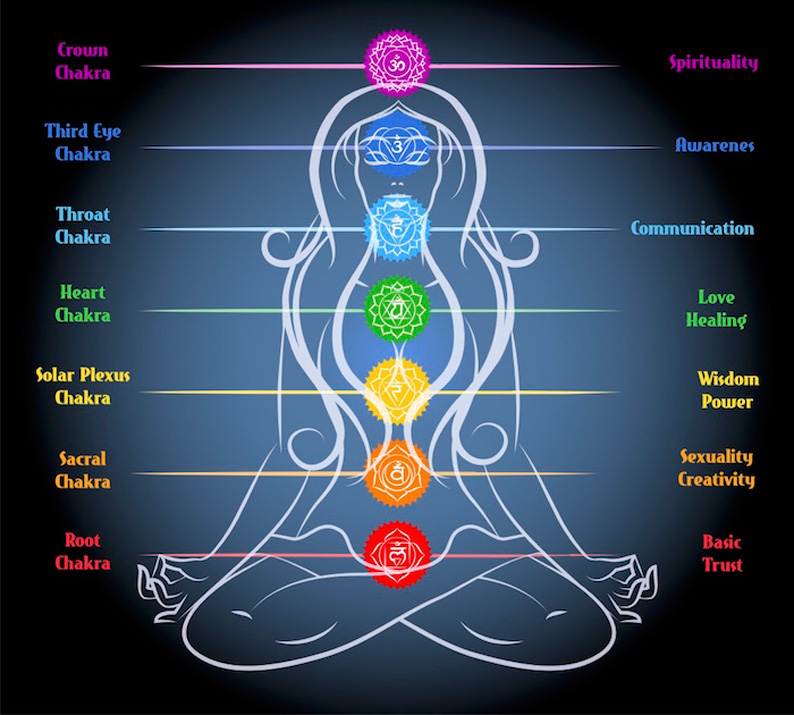 picture from: chakras.info
picture from: chakras.info
It’s interesting to note that in actual fact we have thousands of nadis (72,000 to be precise) and therefore many more chakras (114 in fact!) within our energetic anatomy. The seven chakras that we refer to are simply the most important or most prominent, as a result of their intersection with that big energetic super-highway, Sushumna Nadi. It’s worth looking at each chakra in a little more detail to understand the unique function of each energetic point:
Mularada Chakra
This is the root of the entire chakra system, so it’s often simply referred to as the ‘root chakra’. Muladara chakra is associated with the base of the spine, in the region of the coccyx (tailbone). This chakra governs our sense of belonging and survival, including our family history. A lot of early memories are stored at this energetic point – when muladara chakra is blocked or unbalanced we may lack self-confidence, feel needy, and struggle to trust those around us (this can include close and/or relationships). When is chakra is balanced, an individual will feel strong, self-assured and capable. The colour red is usually associated with Muladara chakra, and we can access this point via the legs and feet – think standing postures in a yoga class, tree pose, mountain pose or tadasana, or any other standing pose that cultivates stability and grounding.
Svadisthana Chakra
Known as the ‘sacral chakra’, Svadistana is associated with the hips and pelvic region in terms of physical anatomy. This chakra is all about our ability to enjoy life (which arises from a strong foundation and trust in ourselves and the world around us, eg Muladara Chakra – see how it all starts to make sense?). This chakra drives our senses and sensuality, our intuition, appreciation of beauty (including delicious food, imagery, and much more), fertility, creativity, pleasure and desire. When this chakra is balanced we will feel that everything is flowing with ease in life, and creativity abounds. A blocked or unbalanced Svadistana chakra might result in feelings of guilt, stagnation, or intense self-criticism. This chakra is associated with the colour orange and can be embodied through hip-oriented yoga postures – think pigeon, frog, straddle, and baddha konasana.
Manipura Chakra
This chakra sits at the level of the solar plexus and is all about willpower and assertiveness! Manipura chakra is associated with the mantra, ‘I do’, translating to our conviction to carry out whatever it is that we set our minds to, and live with dynamic purpose. This chakra sits at the naval centre, and can therefore be accessed via yoga postures that target the digestive system and abdomen, particularly twists. When Manipura chakra is in balance, we feel like we’re firing on all cylinders and taking charge of our lives in a productive and determined fashion. If we lack courage, confidence, assertiveness, and are afraid to take risks, that could be sign of inactivity in this chakra. Manipura is associated with the colour yellow.
Anahata Chakra
Moving up the chain to Anahata Chakra, this one is all about our ability to open our hearts and radiate unconditional love, so it’s no coincidence that Anahata chakra is situated at the heart. When this chakra is balanced we will be able to give and receive love, and act with self-love, compassion and loving kindness towards ourselves (ahimsa). The ability to forgive is associated with a balanced Anahata chakra, so you can probably guess the characteristics that might indicate when this chakra is blocked: we become possessive, co-dependent, and judgemental. The colour green is representative of the heart chakra, and the corresponding yoga postures that can help to access this energetic point are literally referred to as ‘heart openers’: backbends of all kinds! Think cobra, upward facing dog, camel, or wheel pose.
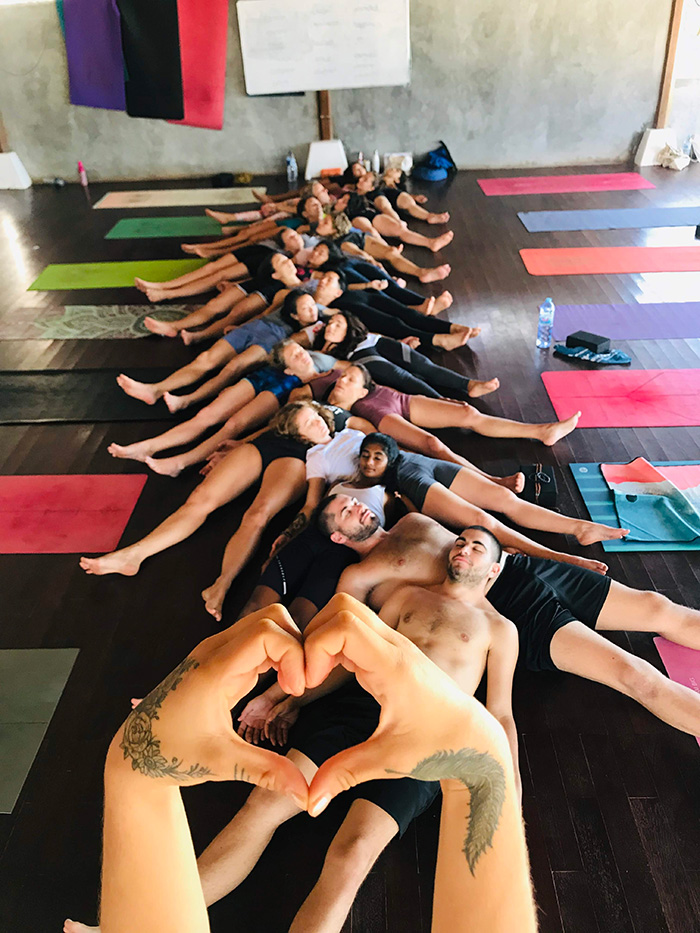
Visshudi Chakra
Also known as the ‘throat chakra’, Visshudi is associated with communication. A throat infection, or recurring throat problems or loss of the voice, could be said to be a physical manifestation of a blocked Visshudi chakra! When this chakra is balanced we’re able to speak what’s on our minds without fear of confrontation or outcome. This results in clarity and peace within, and this chakra is depicted as being a brilliant blue colour. When Visshudi is out of balance, we may find it difficult to communicate honestly or authentically. Postures to open up this chakra could include a supported fish pose (bolster under the torso) in which the throat can open and the back of the head is gentle supported by a block, or drapes down to the floor.
Ajna Chakra
As we move upwards through the chakra system, the focus starts to move more towards our connection with the world outside of ourselves, and the universe at large. Ajna chakra is located at the third eye (between the eyebrows), and if this chakra had a mantra, it would be ‘I see’. Ajna chakra governs our ability to see the big picture and connect with the universe. Intuition and perception are huge indicators of when this chakra is relatively open, and we can visualise the colour indigo, or a deep purple, when working to embody this energetic point.
Sahasrara Chakra
Finally, the chakra system culminates with Sahasrara Chakra – located at the crown of the head but also above and beyond, this chakra connects us to the divine. Associated with a pure, bright white light, Sahasrara Chakra can also be opened or accessed when all of our other chakras are in harmonious balance. There is no physical posture to evoke the divine, if anything, a meditation practice would be the most helpful to cultivate a connection to this chakra. Just like the 8 limbs, in the chakra theory the best is saved for last: a deep understanding, peace and transcendence of worldly suffering, developed through dedicated practice and observation of the self.
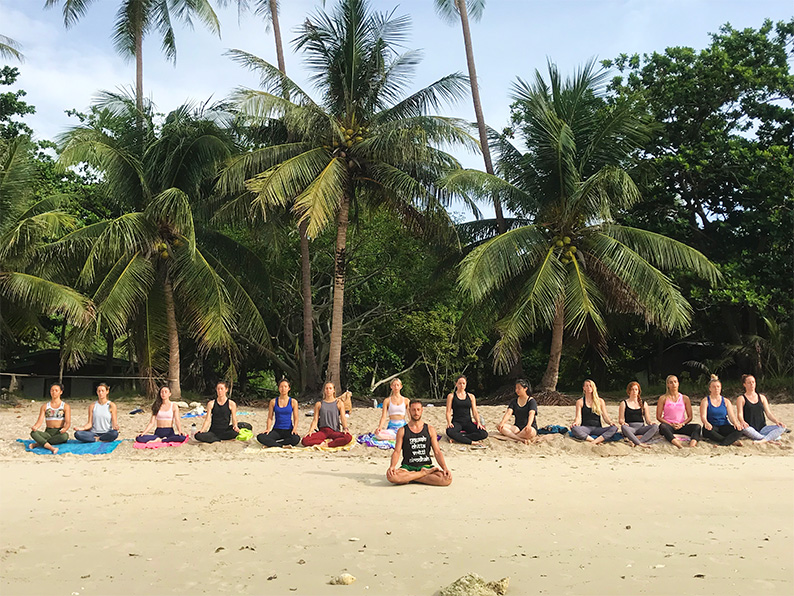
Read More Blogs
Want to Become a Yoga Teacher and/or
Deepen your Yoga Practice?
2 FREE EBOOKS FOR YOU:
- 20 things to know before choosing a yoga teacher training
- 7 tips to deepen your yoga practice right now

Copyright © 2024, All Yoga International ltd. All Rights Reserved
Privacy Policy